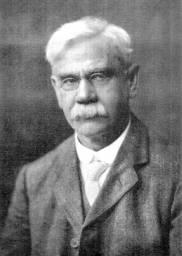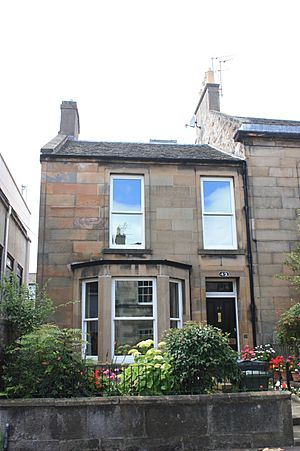Cargill Gilston Knott facts for kids
Quick facts for kids
Cargill Gilston Knott
|
|
|---|---|

Cargill Gilston Knott
|
|
| Born | 30 June 1856 Penicuik, Scotland
|
| Died | 26 October 1922 (aged 66) Edinburgh, Scotland
|
| Nationality | Scottish |
| Citizenship | British |
| Alma mater | University of Edinburgh |
| Awards | Order of the Rising Sun |
| Scientific career | |
| Fields | physics, mathematics, seismology |
| Institutions | Scotland, Japan |
Cargill Gilston Knott (born 30 June 1856 – died 26 October 1922) was a Scottish physicist and mathematician. He was a very important person in the early study of seismology, which is the science of earthquakes. He spent many years working in Japan. Later, he became a member of the important Royal Society in London. He also served as a leader for the Royal Society of Edinburgh and the Scottish Meteorological Society.
About His Life
Cargill Knott was born in Penicuik, Scotland. His father, Pelham Knott, worked for a paper company.
He went to Arbroath High School and then studied at the University of Edinburgh. There, he studied with his friend James Alfred Ewing. Knott focused on electricity and magnetism. He earned his doctorate degree in 1879.
In 1879, he started working as an assistant in Natural Philosophy (which is like physics) at the University of Edinburgh. He stayed there until 1883. That year, he moved to Japan to work at the Tokyo Imperial University. In 1880, he became a member of the Royal Society of Edinburgh. This was a big honor. He also won the Society's Keith Prize for his work between 1893 and 1895. Knott helped start the Edinburgh Mathematical Society in 1883.
Working in Japan
In 1883, Knott took over from his friend James Alfred Ewing as a Professor of Physics and Engineering at Tokyo Imperial University. He spent nine years in Japan. During this time, he worked closely with other scientists like John Milne and Fusakichi Omori. They set up a network of seismometers across Japan. These machines helped record earthquakes. Knott also taught classes in mathematics, acoustics (the study of sound), and electromagnetism.
Knott also did the first survey of Japan's geomagnetism. This is the study of Earth's magnetic field. He worked with a Japanese scientist named Aikitu Tanakadate. From this survey, they created the first map showing earthquake risks in Japan. Knott was very good at mathematics and analyzing data. He used a special math technique called Fourier analysis to study when earthquakes happened. He hoped this would help predict future earthquakes.
In 1885, Cargill Knott married Mary Dixon. When he finished his work in Japan in 1891, the Japanese Emperor Meiji gave him a special award called the Order of the Rising Sun.
Back in Edinburgh
After returning to Edinburgh in 1892, Knott became a Reader in Applied Mathematics at the University of Edinburgh. He held this job until he passed away in 1922.
While in Japan, Knott started to create mathematical equations. These equations described how earthquake vibrations bounce off or pass through the boundary between seawater and the seabed. After he came back to Edinburgh, he continued this research. He expanded his work to describe how earthquake waves behave when they hit the boundary between two different types of rock.
Knott's equations were the first to explain how strong reflected and refracted waves are. Today, these equations, along with the Zoeppritz equations, are very important for modern reflection seismology. This technique is used to find oil and gas underground.
Knott continued his math work, including using quaternions. These are a type of number system. He also became more involved with the Royal Society of Edinburgh. He served on its Council and later became its general secretary. Knott was also active in his community, teaching Sunday school and helping with church matters. In 1920, he was elected a member of the Royal Society, which is a very high honor for scientists. He was also part of the Scottish Meteorological Society.
Cargill Knott died at his home in Edinburgh on 26 October 1922.
Family
In 1885, Cargill Knott married Mary Dixon. She was the sister of the writer James Main Dixon.
See also
- Knott's equations
- James Alfred Ewing
- Arthur Schuster


